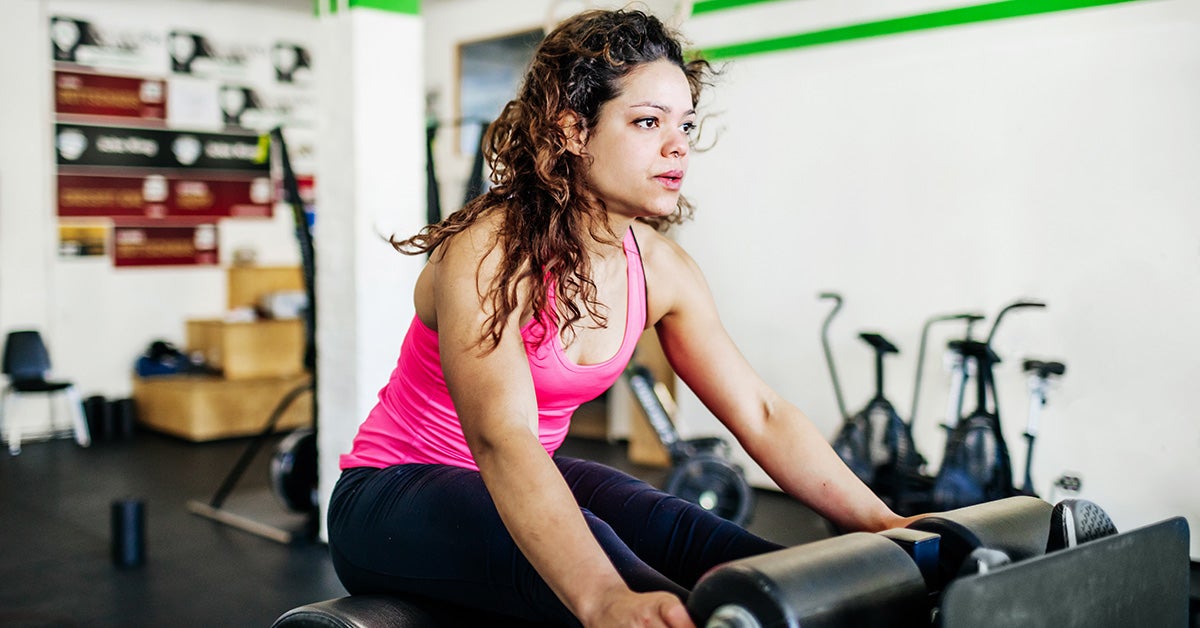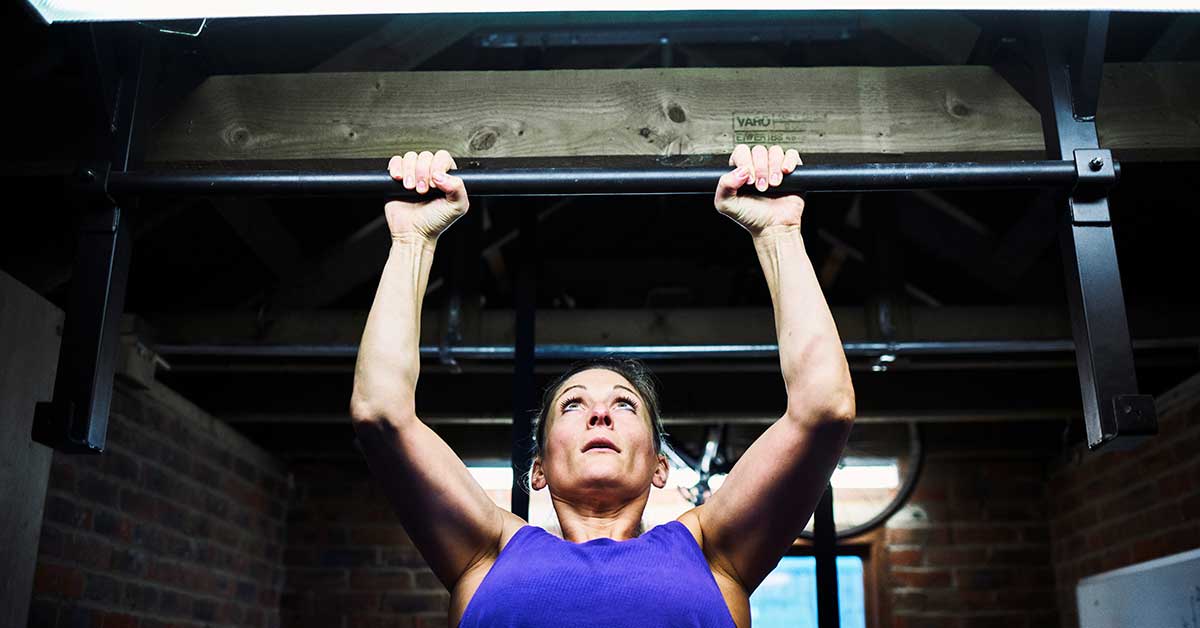Doing Weighted Situps for Your Abs, Back, Hips, and Chest
Even when situps are part of a regular exercise routine, muscle development can slow down after some time. Your abdominal muscles can get used to a particular exercise, and as a result, you'll need to find new ways to challenge these muscles.
Switching to a weighted situp is a simple way to change up your workout and add a new stimulus.
Situps are a simple, yet effective workout for tightening and strengthening your core muscles without any special equipment. While a regular situp can tone your abdomen, you may have better and faster results with a weighted situp.
You can perform a weighted situp in the same manner as a non-weighted version. The difference with this exercise is that you'll hold a weighted plate or dumbbell in your hand.
Weighted situps work the same muscle groups as non-weighted situps. Yet, the added resistance from the weight increases the intensity of the workout, resulting in stronger muscles.
Muscles worked
Primary muscles activated during a situp include the rectus abdominis, which are the muscle fibers in front of the torso.
Other muscles worked include the obliques, the quadricep muscles, and the hip flexors, which are the muscles connecting your thigh bone to your pelvis.
 Share on Pinterest
Share on PinterestTo perform a weighted situp:
- Grab a dumbbell or weighted plate and sit on the floor.
- Hold the weight against your chest and lie on your back. Bend your knees at a 90-degree angle, and keep your feet firmly planted on the floor.
- While holding the weight, slowly contract your core and raise your upper body toward your knees until your forearms touch your thighs. Your hip and feet should remain on the floor.
- Hold this position for a few seconds, and then lower back to starting position. Repeat the desired number of repetitions.
- Avoid injury by adding weights at the right time. While the extra resistance challenges your abdominal muscles, the extra weight can also cause injury to your back and spine. Therefore, only incorporate a weighted situp if you're at an advanced fitness level, and only if you have a trained core. This modification isn't for beginners.
- Start light. Once you feel that you're ready to add a weighted situp and build stronger core strength, start with a light weight, perhaps 5 or 10 pounds. Gradually increase the weight as your core becomes stronger.
- Get a comfortable grip. Also, use a weight that you're comfortable holding during the situp. Some people are comfortable with a weight plate, while others are more comfortable holding a dumbbell. You can also complete this exercise with a weighted medicine ball.
- Go for the assist to stay stable. To keep your body stabilized, place your feet underneath a bar or have someone hold your feet.
Variations and modifications can make this exercise easier or harder to perform. If you're having trouble completing a weighted situp, reducing the weight can make it easier to raise your torso. It also puts less stress on your core and back.
If you're comfortable with the weight and want to make the workout harder, here are two good ways to do that.
Switch to an overhead weighted situp
You'll perform this situp with the weight above your head. This move can put extra pressure on your back, so you might need to use a lighter weight.
In addition to your abdomen, quadriceps, chest, and lower back, an overhead weighted situp also works your arms and shoulders.
Use an incline bench
Performing a weighted situp on an incline bench can also increase intensity.
Some people refer to this particular exercise as a 'weighted decline situp' because it's performed with the head lower than the hips. Others, however, refer to it as a 'weighted incline situp' because it's performed on an incline bench. Despite the different terminology, these are the same exercises.
To get started, you only need an incline bench and a weight.
- Lie flat on your back looking upward. Your hips, torso, and head should be flat on the bench, and your feet secured underneath the foot brace.
- With a weight placed against your chest or overhead, begin lifting your torso toward your knees.
- Hold this position for a few seconds before lowering to starting position.
A weighted situp on an incline bench allows for greater range of motion. And because you're at an incline, you're working against gravity, thus increasing the resistance.
Your abdominal muscles and other muscle groups have to work harder, resulting in tighter abs and a stronger core.
If you're a beginner, set the incline bench at a low angle and start with a low weight.
A weighted situp is an effective move for strengthening and tightening your abdominal muscles. But you can incorporate other moves, too.
Add an oblique twist
To tone and tighten your oblique muscles, include a set of twist situps.
Each time you lift your body off the floor toward your knee, rotate your torso so that your elbow touches the opposite knee. Return to starting position and repeat with the other elbow and knee.
Do weighted crunches instead
If a weighted situp is too much physically, perform a weighted crunch instead. Some people use the terms crunch and situp interchangeably, but these exercises differ.
While a situp lifts the entire torso off the floor, crunches only lift the head, neck, and shoulders. So they don't work as many muscle groups. A crunch only works the abdominal muscles, whereas a situp also works muscles in the chest, back, and legs.
Mix it up
Other exercises for a strong core include a plank, scissor kicks, and leg lifts.
Getting rock-hard abs involves more than cardio and diet. Even though physical activity and eating right can help you lose fat, you need to add abdominal workouts to strengthen and tighten these muscles.
A normal non-weighted situp can transform your abdomen. But if you're looking for more definition and bigger muscles, a weighted situp provides a new way to challenge your midsection.
-
 6 interesting genetic traits that children will inherit from their parents
6 interesting genetic traits that children will inherit from their parents
-
 7 effects of asparagus on child development
7 effects of asparagus on child development
-
 Does cutting blood hair for babies bring good luck?
Does cutting blood hair for babies bring good luck?
-
 The more babies eat, the higher the height they develop, especially the second kind
The more babies eat, the higher the height they develop, especially the second kind
-
 Children with chicken pox should eat to quickly recover from the disease, without leaving a deep scar?
Children with chicken pox should eat to quickly recover from the disease, without leaving a deep scar?
-
 The more food is cooked, the better it can be for health, especially the second type
The more food is cooked, the better it can be for health, especially the second type
-
 Perfume Poisoning: Symptoms, Dangers, and What to Do
Perfume Poisoning: Symptoms, Dangers, and What to Do
-
 Home Treatments for Trichomoniasis: Do They Work?
Home Treatments for Trichomoniasis: Do They Work?
-
 Home Remedies for Gonorrhea: Too Good to Be True?
Home Remedies for Gonorrhea: Too Good to Be True?
-
 Exercise to Gain Weight: How Men and Women Can Bulk Up
Exercise to Gain Weight: How Men and Women Can Bulk Up
-
 Best Exercises for Golfer's Elbow: Plus Treatment and Prevention Tips
Best Exercises for Golfer's Elbow: Plus Treatment and Prevention Tips
-
 Pronated Grip: Benefits for Pullups, Bicep Curls, and More
Pronated Grip: Benefits for Pullups, Bicep Curls, and More































